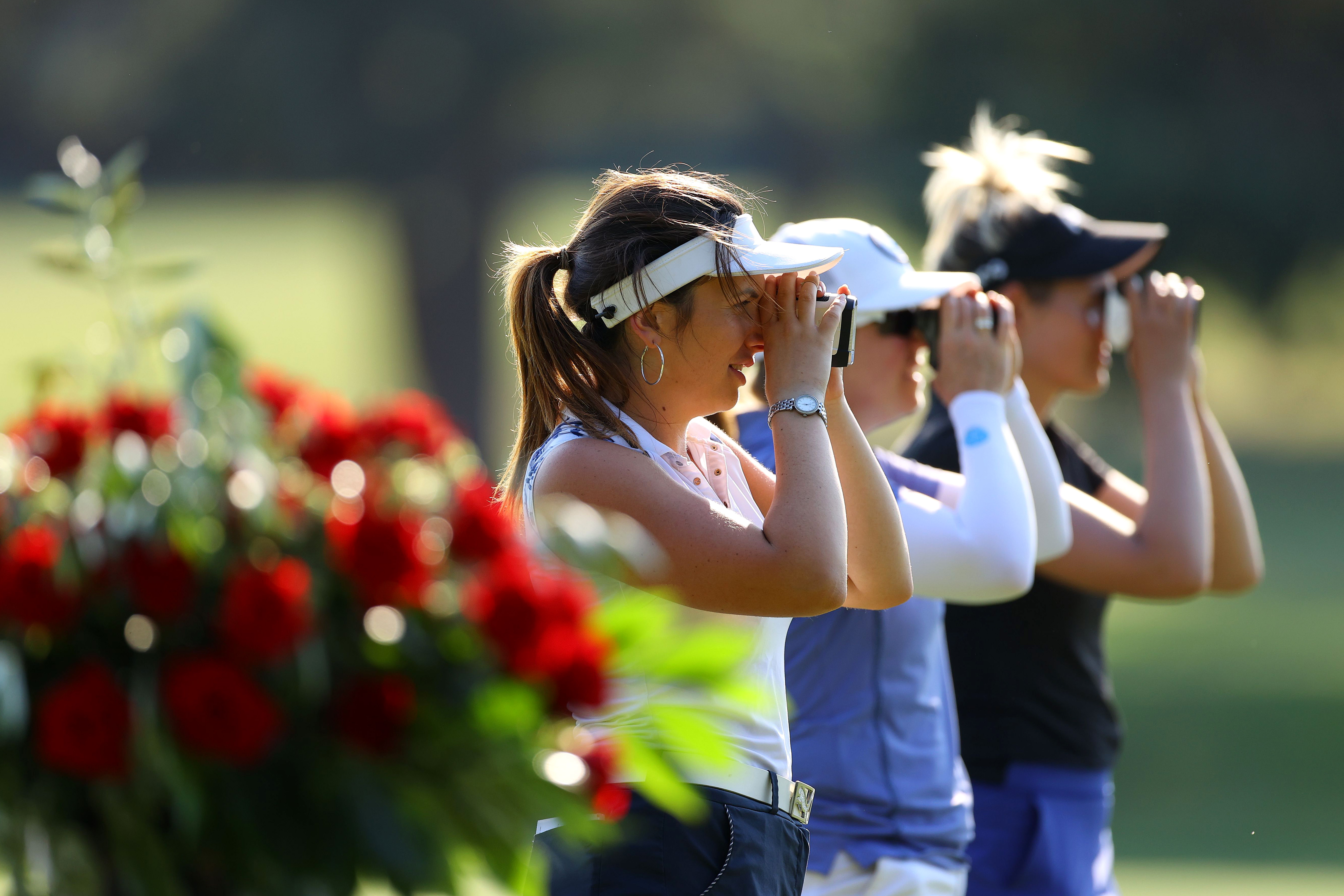JOHNS CREEK, Georgia – Danielle Kang admits she’s on the extreme side. She’d be fine with having a tournament that didn’t allow rangefinders, green-reading books or even yardage books. Just eye-ball everything.
“I know I wear joggers and hoodies,” said Kang, “but sometimes there’s just skills that you just need, and I believe that caddying is a skill; it’s important who you hire.”
The KPMG Women’s PGA marks the first week that distance-measuring devices will be permitted at an LPGA major.
What’s allowed: Getting information on distance or direction (such as from a distance-measuring device or compass).
What’s not allowed: Measuring or calculating elevation changes, wind speed, “effective yardages” or interpreting distance or directional information (such as using a device to get a recommended line of play or club selection based on the location of a player’s ball).
But it won’t stop after this week. Earlier this month the LPGA announced Voice Caddie as the “Official Rangefinder of the LPGA,” signing a multi-year agreement with the South Korean company.
Every player on the LPGA, Symetra Tour, LET and LET Access Series was given an SL2 Laser Rangefinder. Players will be allowed to use distance-measuring devices at most LPGA events going forward. LPGA officials are still working with partners for several co-sanctioned events.
The Symetra Tour began using distance-measuring devices in 2020. They were also allowed at LPGA Monday-qualifying events last year.
Players had a mixed reaction to the change.
Inbee Park said she was neutral to the idea, noting that she’s not the type of person who gets her own yardage.
“I just asked my caddie (Brad Beecher) ‘What do you think of it?’ He said, it’s their job to figure out the yardage, right?” said Park. “He thinks that when somebody just goes there and just shoots the yardages, it’s obviously accurate, but nothing really becomes like their job of doing good or bad. Everybody’s just going to be having an average. Nobody’s going to be making mistakes. Nobody’s going to be that good at getting yardage.
“It’s just literally taking their job away, I think.”
Nelly Korda said she and her caddie are taking a “we’ll see” approach.
“Possibly if I’m really offline,” she said, “but Jason (McDede) and I have a routine already, and we like to stick to that. I like to pace it off. I’m not against it though.”
Amy Olson loves the idea, noting that players use them in their off-weeks.
“It just eliminates one more variability that could be off,” she said.
Veteran looper Travis Wilson said he’ll put a rangefinder in the bag but doesn’t see himself using it much. Wilson, who works for Stacy Lewis, believes it will actually slow down pace of play.
“People are going to have to wait until people put the pin back in,” he said. “Then they’ll shoot it. Then the player is going to go ‘How far is it to the front?’ And then they’ve got to do a little math. ‘How far is it to the top of the ridge?’ This is all stuff I’m going to have 30 seconds after I get to the ball, waiting for the green to clear so you can hit, and not the other way around.”
Katherine Kirk said she and Vern Tess have decided that he’ll go straight to the ball to laser the yardage while she walks off the sprinkler heads, and then they’ll compare notes.
Last week Golfweek’s Eamon Lynch reported that the PGA Tour is likely to ban the controversial green-reading books used by many of its players before the start of next season. The Tour’s Player Advisory Council voted to outlaw the books at a meeting three weeks ago.
Kang said she wouldn’t mind seeing the LPGA move in a similar direction.
“Being honest, there’s a lot of things that I don’t agree with that the rules are changing because I’m kind of an old-school golfer,” she said. “So I don’t even believe in greens books. I don’t even carry one. I believe that green reading is a skill. … You should be able to read them. Whether it’s aim-pointing, you should be able to feel. Golf is feel.”

